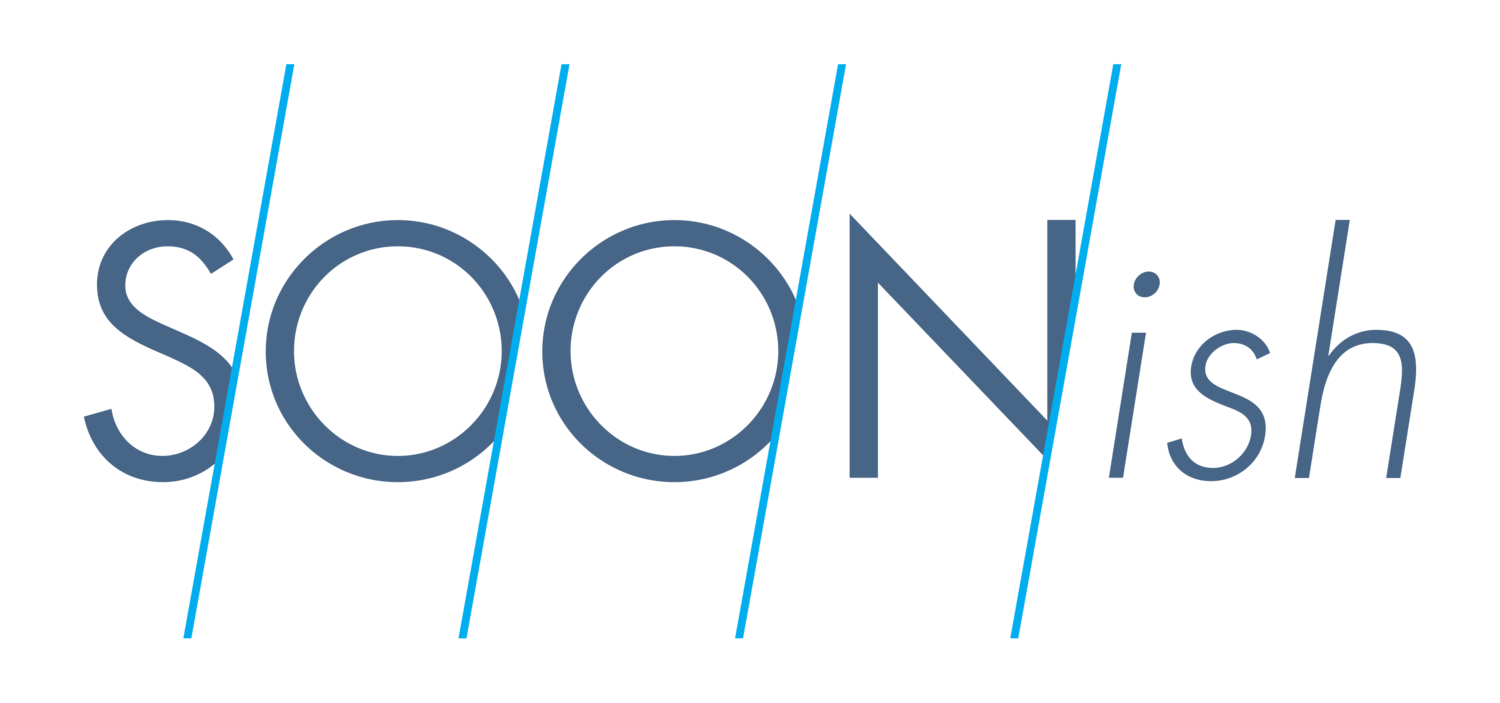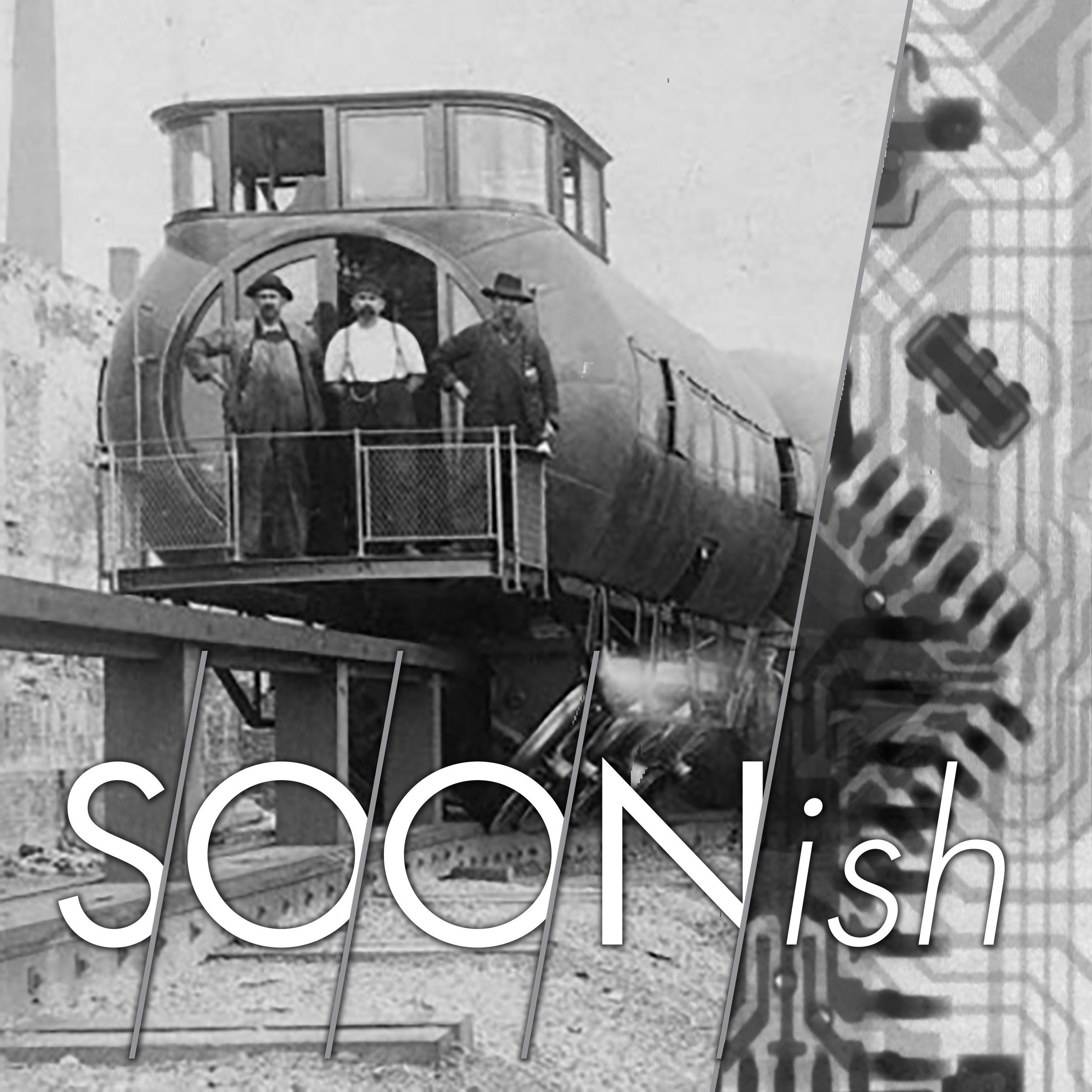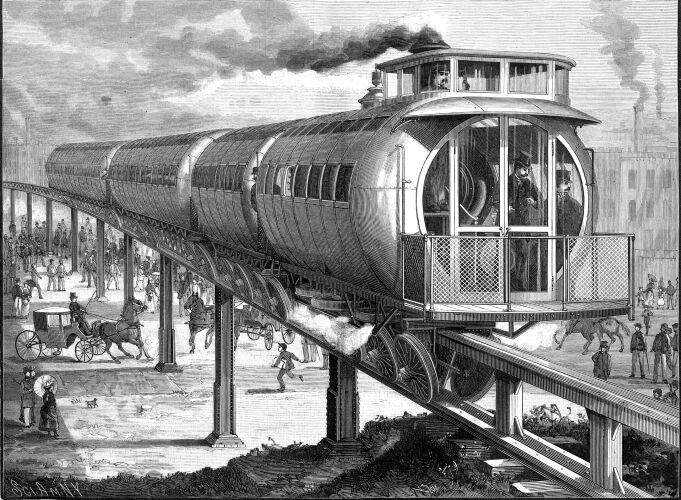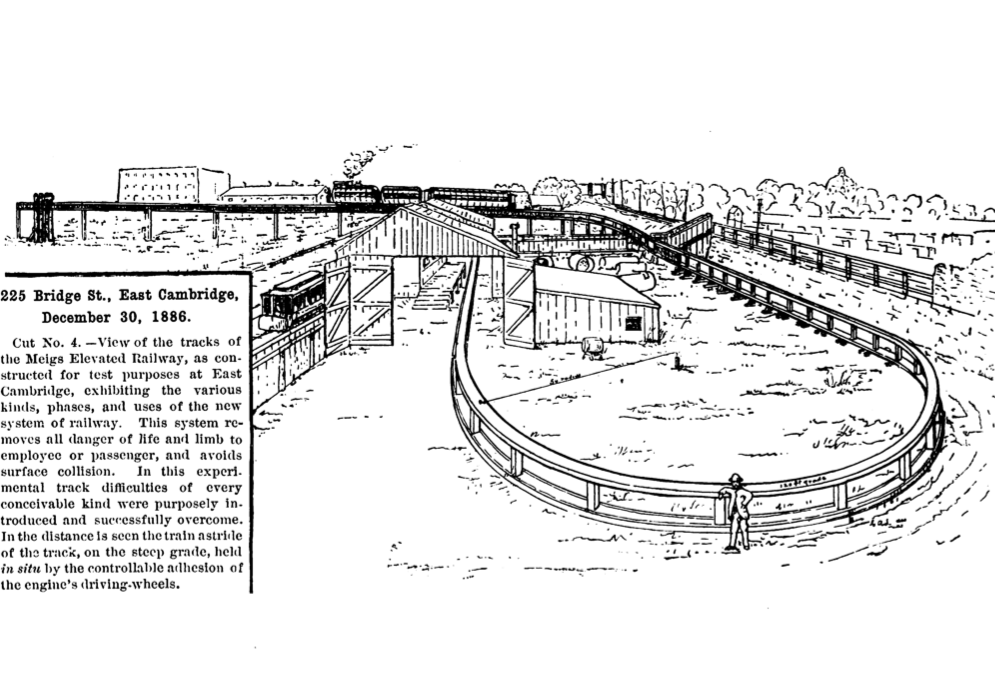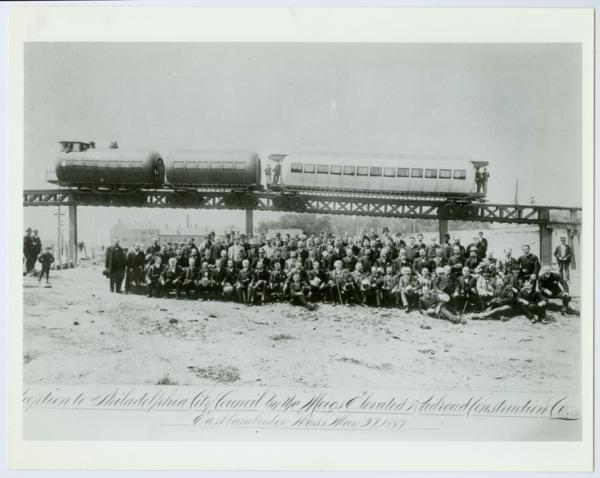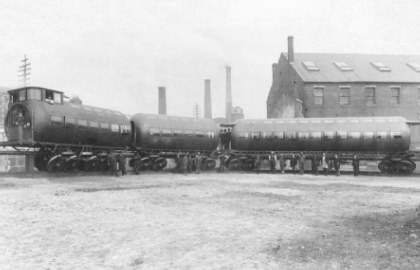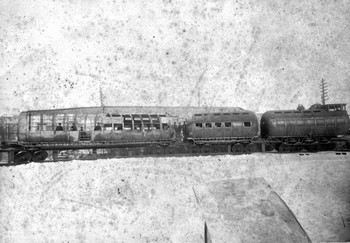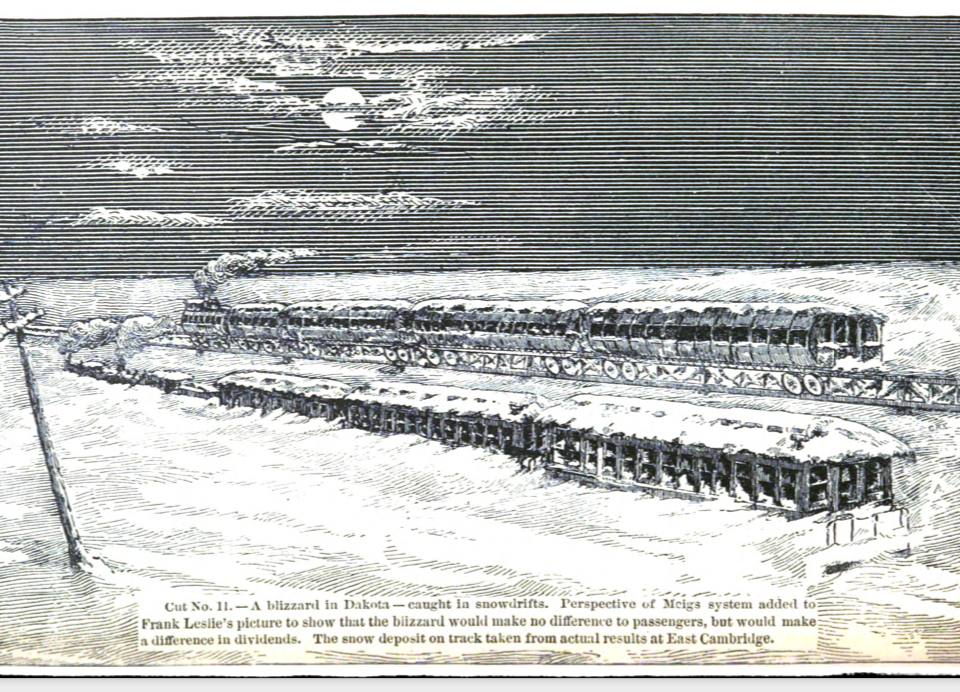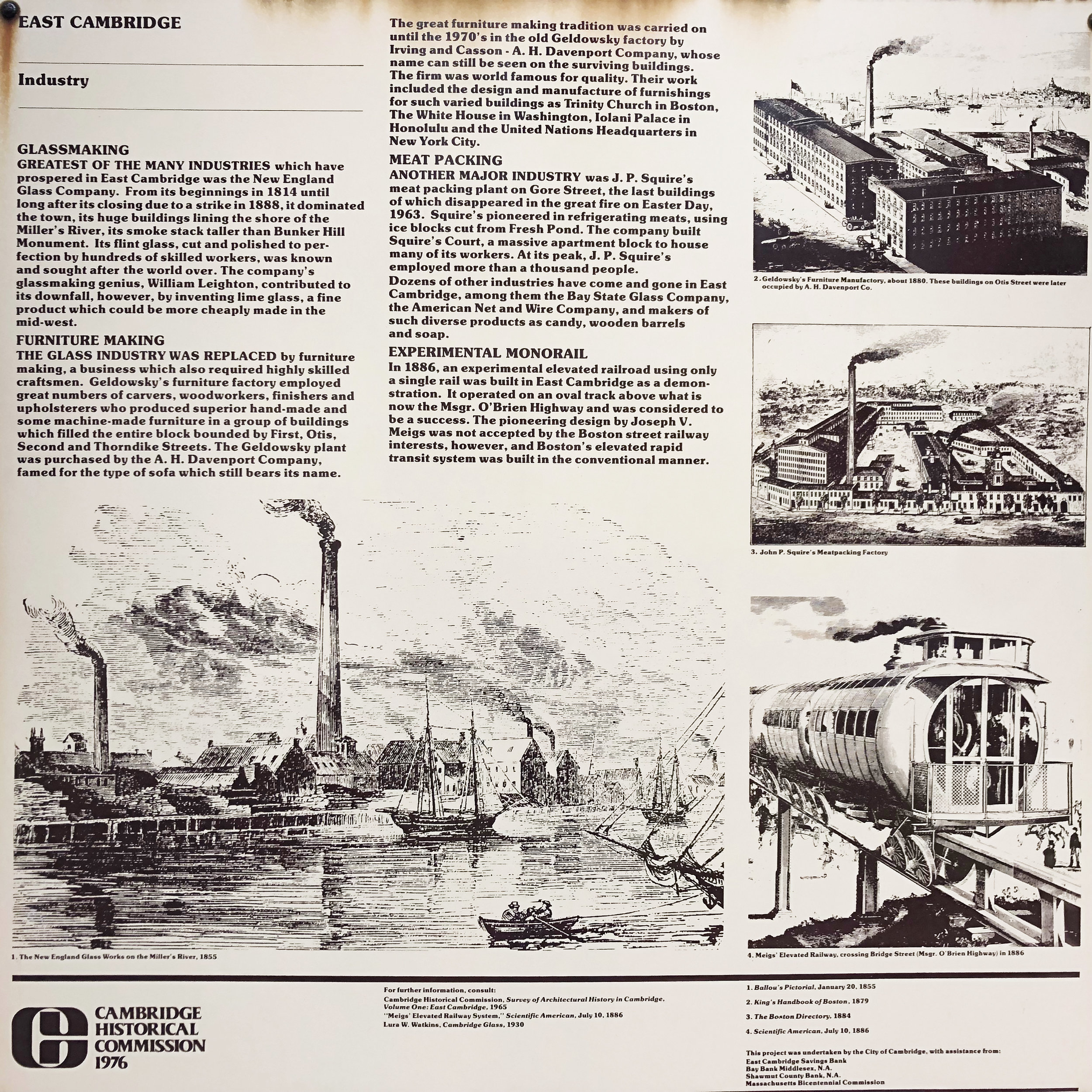3.02 | 11.09.18
It always pays to read the plaque.
One autumn day in 2016, while strolling in my neighborhood in East Cambridge, MA, I stopped to look at a series of historical plaques on the grounds of the Middlesex County Registry of Deeds and Probate Court. Placed by the Cambridge Historical Commission as part of a U.S. bicentennial project in 1976, the plaques detailed the history of the neighborhood. One plaque covered local industries, and my eye was drawn to an etching of a strange-looking tubular railroad car riding on a single rail. The plaque’s text explained that East Cambridge was briefly home to one of the world’s first monorail systems in the 1880s.
This was almost too much of a coincidence to believe. I was already deep into production on a Season 1 episode of Soonish about monorails and why U.S. cities don’t have more of them—and now I was learning that a very early experimental monorail, designed by someone named Josiah Vincent Meigs, had been built just half a mile from my own apartment building.
I resolved to find out more about Meigs and his idea, which led, months later, to an interview with Charlie Sullivan. Since 1975, he’s been the executive director of the Cambridge Historical Commission, and he’s probably one of the world’s leading experts on the Meigs monorail project. (He actually wrote the text of the plaque.) Charlie told me the fascinating story of Meigs’s plan, and how he hoped to cure Boston’s chronic streetcar congestion problem with an innovative single-rail rapid transit system that would have soared far above street traffic.
Meigs built the East Cambridge demonstration track to prove the concept, operated it safely for many years, and even received a charter to build his monorail system in downtown Boston. The Meigs Elevated Railway would arguably have been cheaper, safer, and less imposing than the conventional dual-track elevated railways being built in other cities at that time, such as New York (and later built in Boston). But Meigs’s project eventually fell prey to vicious opposition from the local streetcar industry.
And therein, it seemed, lay an important Soonish-style lesson: the best technology isn’t always the winning technology.
I wanted to include the Meigs story as a segment in the 2017 monorail episode, but I just couldn’t squeeze it in. So I left it for another day—and that day finally came this fall, when I was invited to prepare a script for a live, 15-minute performance on the Media Stage of the Hall of the Future at Boston’s HUBweek. I added to the script for another live performance at the Sound Education conference at Harvard Divinity School in November 2018. And now it’s ready in final podcast form. Enjoy!
Addendum, December 27, 2018: The Boston Globe’s Ideas section has published a print adaptation of this podcast, replete with images from Meigs’s book. Enjoy.
Transcript
Read a full transcript of the episode in our Extras section.
Images and Photographs of the Meigs Railway
All images are in the public domain.
Mentioned In This Episode
Cambridge Historical Commission
Benjamin Butler (Wikipedia)
The History of the Massachusetts Bay Transit Authority
The Great White Hurricane of 1888 (New England Historical Society)
Additional Reading
The Cambridge Monorail That Wasn’t, Boston Globe, December 27, 2018 [a print adaptation of this episode]
The Meigs Railway: The Reason for Its Departures from the Ordinary Practice. Its Departures, and How and Why a Safe Railway Is Possible (Boston: C.H. Whiting, 1887) on Google Books
Chapter Guide
0:55 Opening
1:58 The Unknown Railway
2:49 Monorail Fanboy
3:37 225 Bridge Street
5:42 Readings from The Meigs Railway
6:42 Untangling the Streetcar System
8:32 Light and Air
10:10 Who Was Joe Meigs?
11:42 One Little Problem
12:18 Building the Demonstration Track
13:09 Four Wheel Drive
14:20 Sausage on a Stick
15:58 Two Ways of Moving People
16:37 Foul Play
18:05 A Stubborn Guy
20:01 Parallel Universe
21:49 How We Choose the Future
22:22 End Credits and Announcements
Notes
The Soonish theme is by Graham Gordon Ramsay.
All other music by Titlecard Music and Sound.
If you haven’t already, please rate and review Soonish on Apple Podcasts / iTunes! The more ratings we get, the more people will find the show. See applepodcasts.com/soonish
You can also support the show with a per-episode donation at patreon.com/soonish. Listener support makes all the difference!
Special thanks this week to Charlie Sullivan at the Cambridge Historical Commission and Charles Gustine of Iconography.
